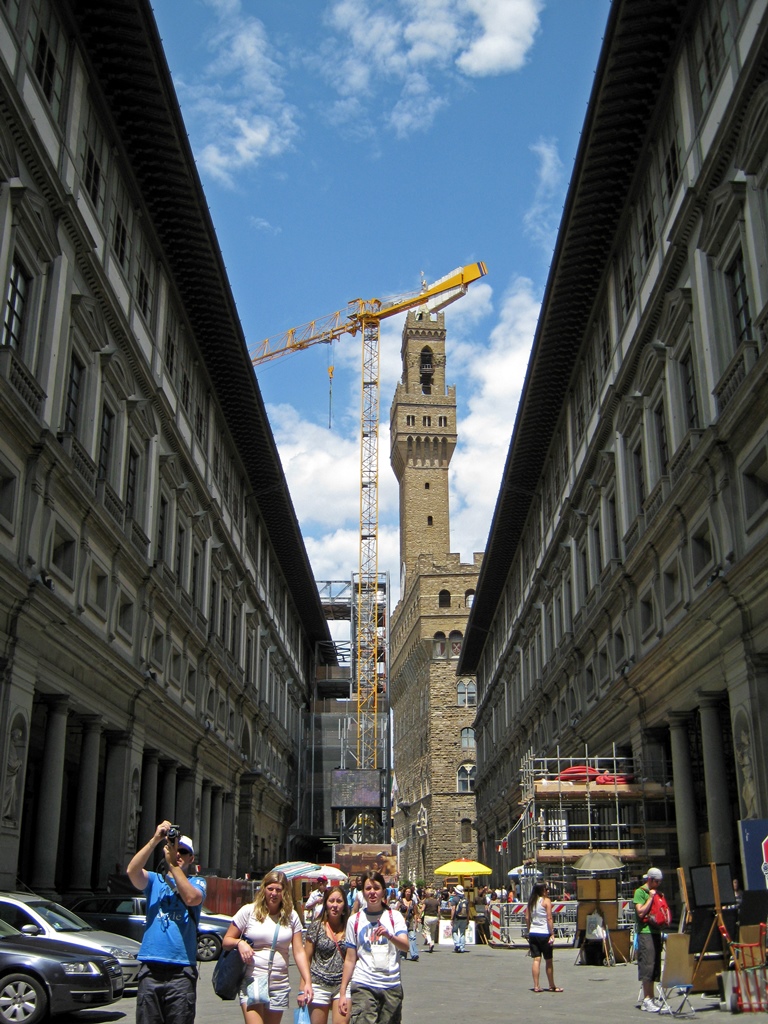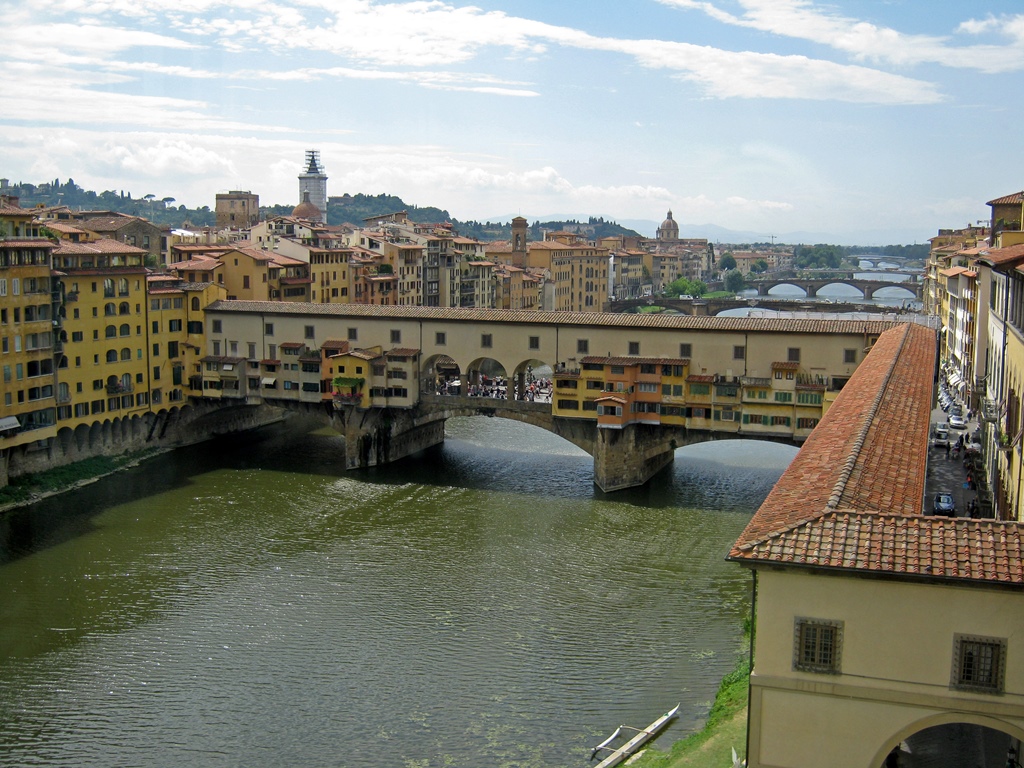The Uffizi Gallery is one of the great art museums of the world, but didn't start out
that way. It was built from 1560-1581 by Giorgio Vasari (though he didn't live to see
its completion) for the Medici family as a building of offices (uffizi in
Italian). From early on, the family stored part of its art collection in the building,
and this collection grew steadily over the centuries of Medici power. With the wealth
and influence wielded by the Medici in Florence during a possibly unparalleled period
of artistic achievement, an amazing private collection of masterpieces was amassed.
The Medici line ended in the 18th Century, and the last heiress, Anna Maria Luisa,
bequeathed the building and collection to the city in 1737. The Uffizi was opened as a
museum in 1765.
When visiting the Uffizi, it's very important to make a reservation in advance, if at
all possible. The number of people allowed in the museum at one time is carefully
regulated, and the line for people showing up without reservations is long and
extremely slow-moving. If you aren't going to Florence to spend literally hours
standing in a line, go online a few weeks before your trip and make your Uffizi
appointment. And while you're at it, make your Galleria dell'Accademia appointment
too – more on this later.
We walked over to the Uffizi from the Santa Croce church, stopping at a trattoria for
a splendid (and gorgeous) lunch on the way.
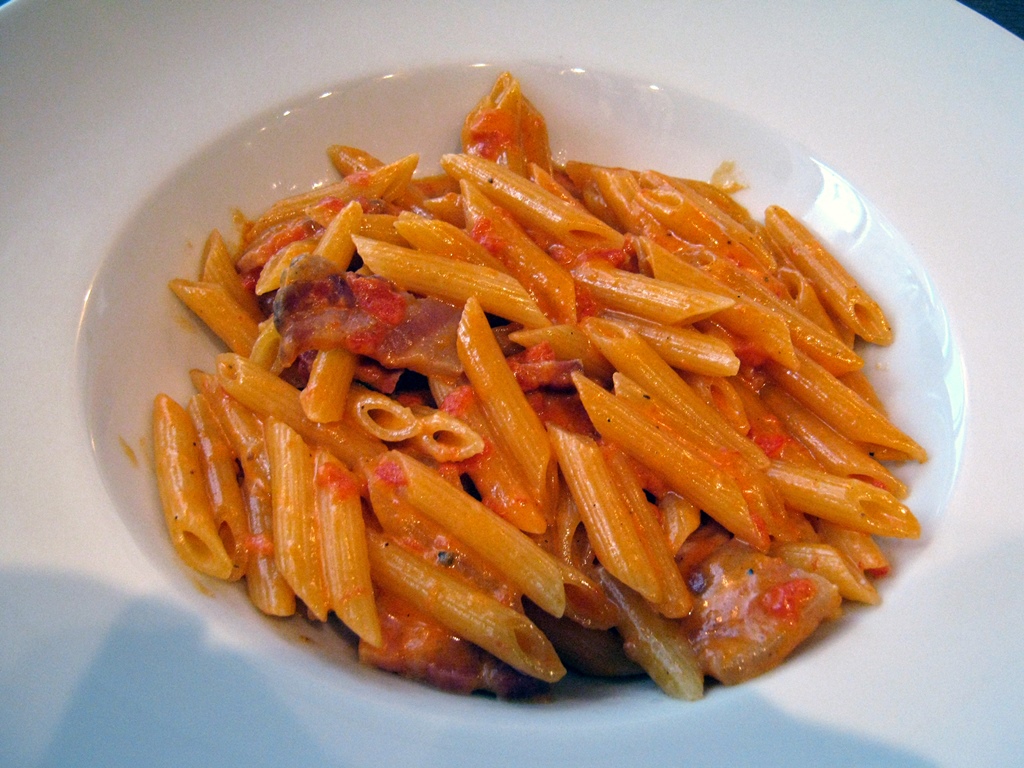
Pasta for Lunch
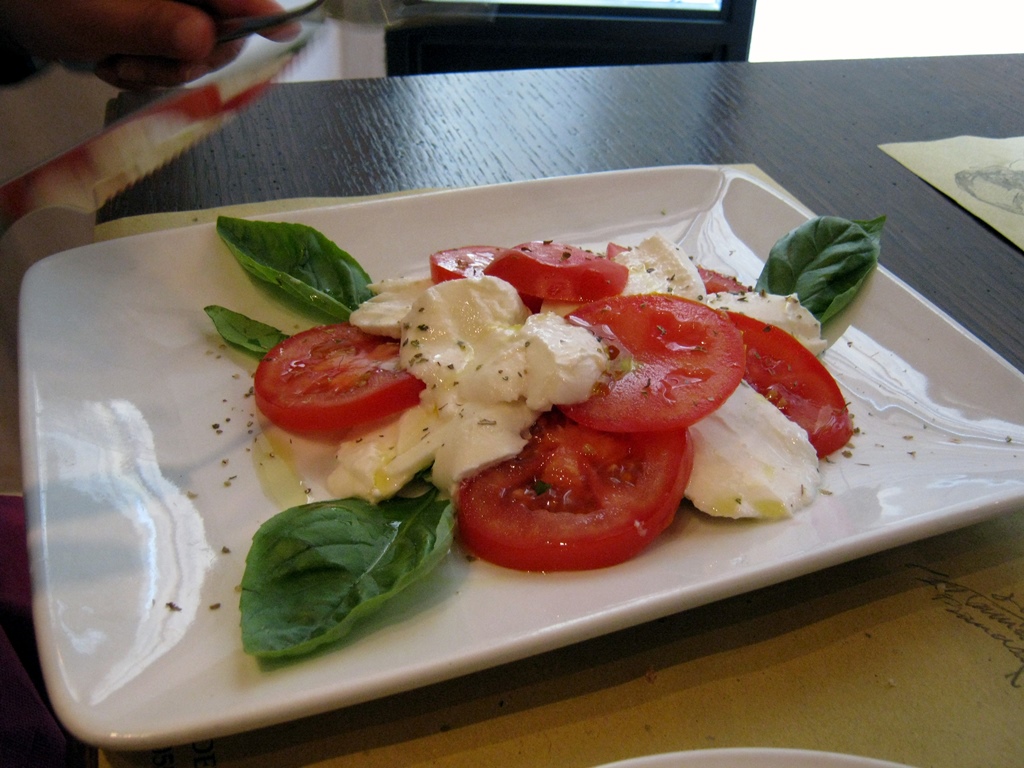
Caprese Salad
On arriving at the Uffizi, we found ourselves early for our appointment, so we took
some time to look around in the courtyard a little. The Uffizi is laid out as two long,
parallel three-story buildings on either side of a long, narrow courtyard. A walkway
connects the upper floors of the two buildings at the south end. The museum is housed
in the top floor of both buildings. The courtyard is a pathway between the Piazza della
Signoria to the north and the Arno River to the south.
Uffizi Courtyard
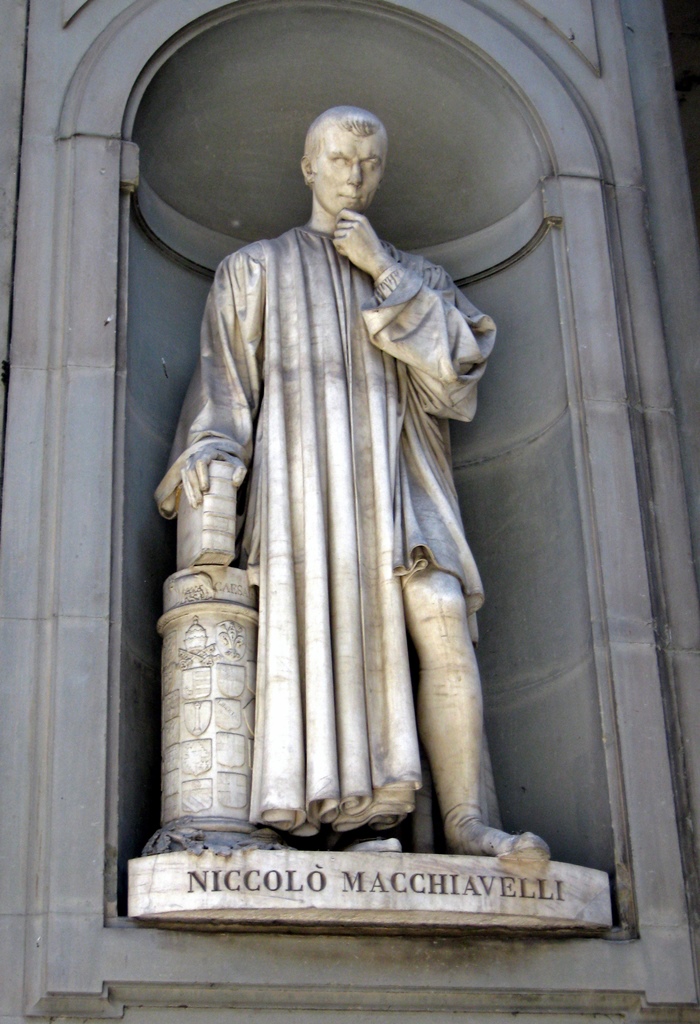
Niccolo Machiavelli Statue
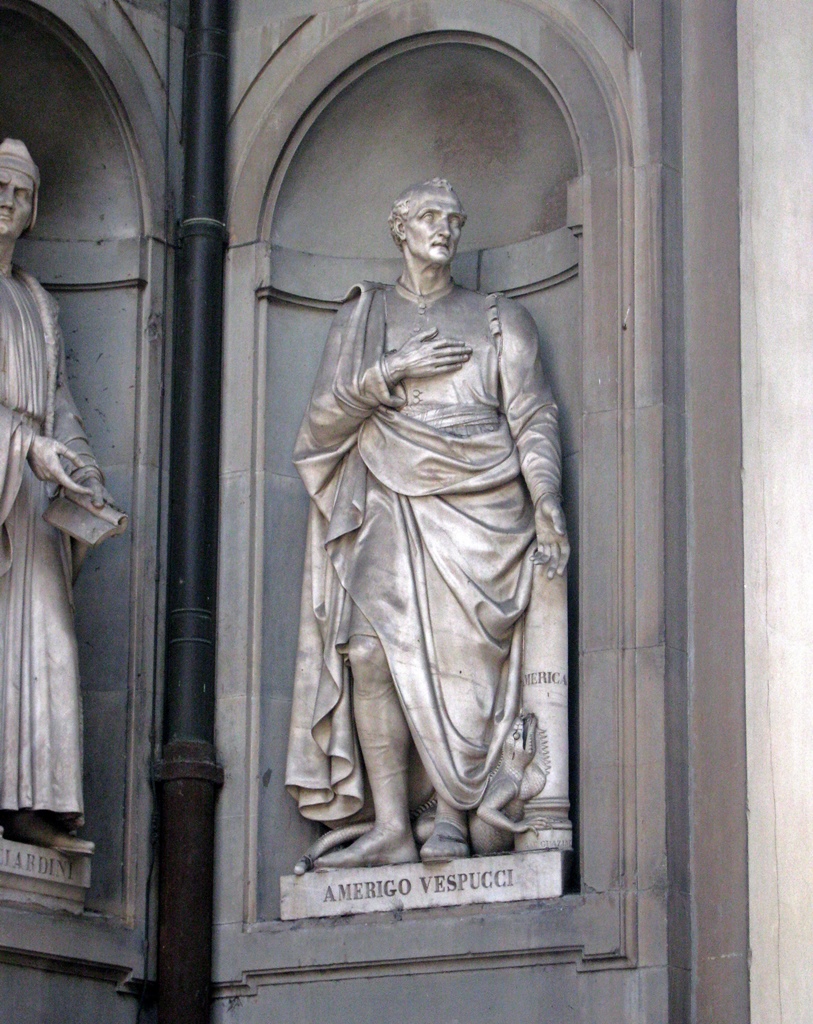
Amerigo Vespucci Statue
We looked at some of the statues of famous Florentines which face the courtyard from
both sides as we walked southward, eventually reaching a spot with a nice view of the
Arno (be careful here – there is a narrow, open-to-traffic street between the end of
the museum and the wall overlooking the river). A team of canoers was on the river,
paddling downstream toward the Ponte Vecchio. The Ponte Vecchio is a picturesque old
bridge (from 1345, the name actually means "Old Bridge") with shops all over it.
Since 1593, the shops have been occupied by goldsmiths. During World War II, the
retreating Nazis blew up all the bridges across the Arno except this one.
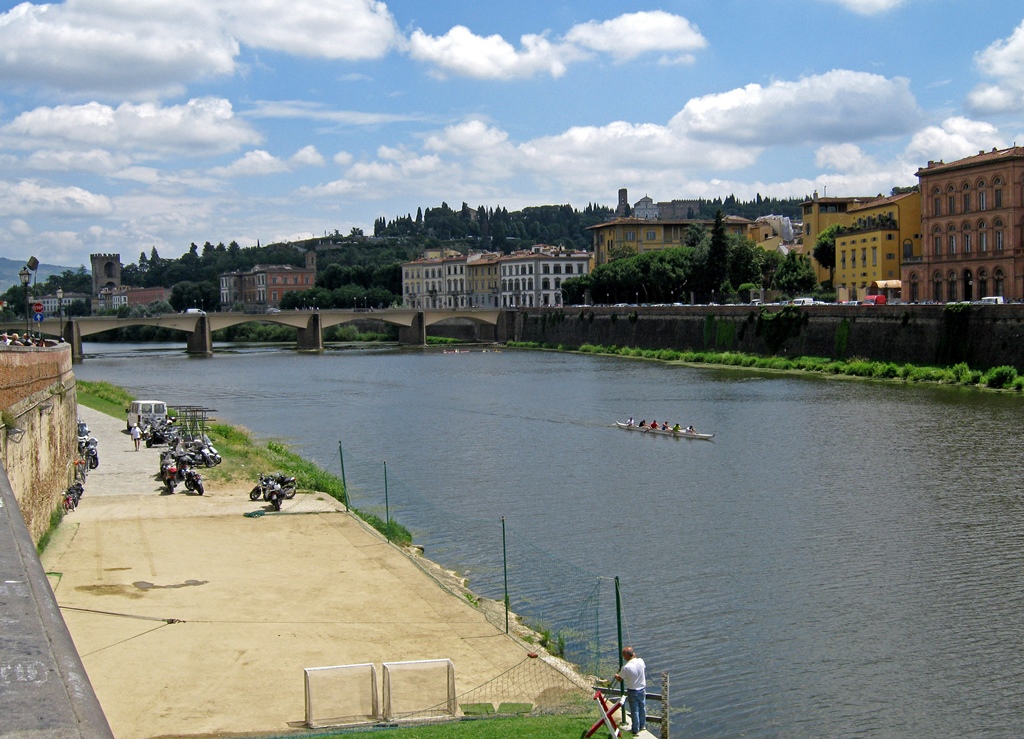
Upstream from the Uffizi
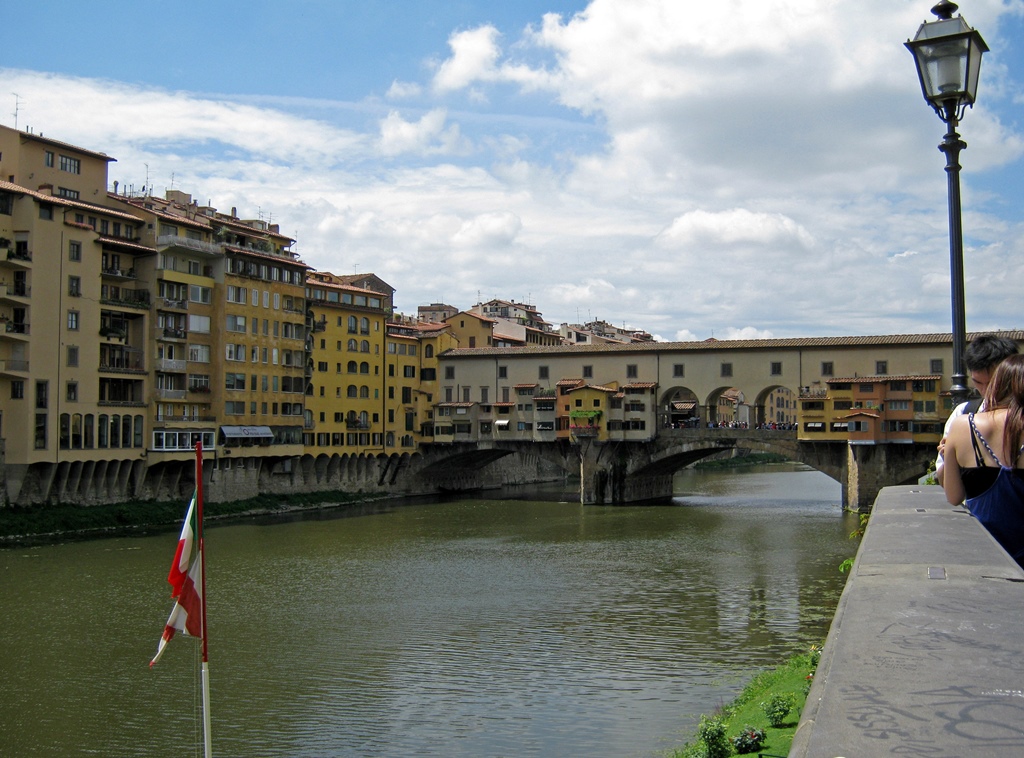
Ponte Vecchio
Canoers Approaching Ponte Vecchio
As our appointment time approached, we went to a special entrance for people with reservations,
where we showed them our confirmations and were admitted. Unfortunately, the rules did not
allow visitors to take photographs. Even more unfortunately, they seemed to be serious about
the rules, as nobody was taking pictures. So we didn't take very many either. The ones we did
take were of the "safe" variety, not including the artworks. So the art pictures below are
from another time we'd visited the museum, in 2000, when non-flash photography was OK. If
people look unexpectedly youthful in these pictures, you're not seeing things. We apologize for
the quality of some of these pictures, as digital cameras weren't nearly as good back then.
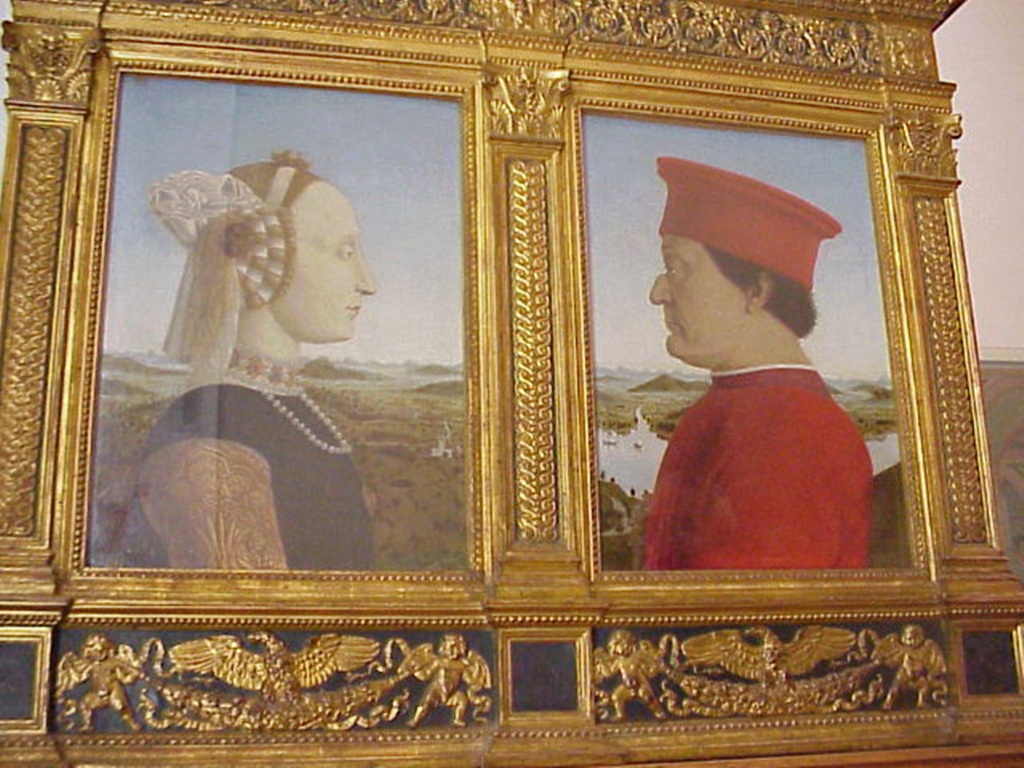
Duke and Duchess of Urbino, Piero della Francesca (1465-70)
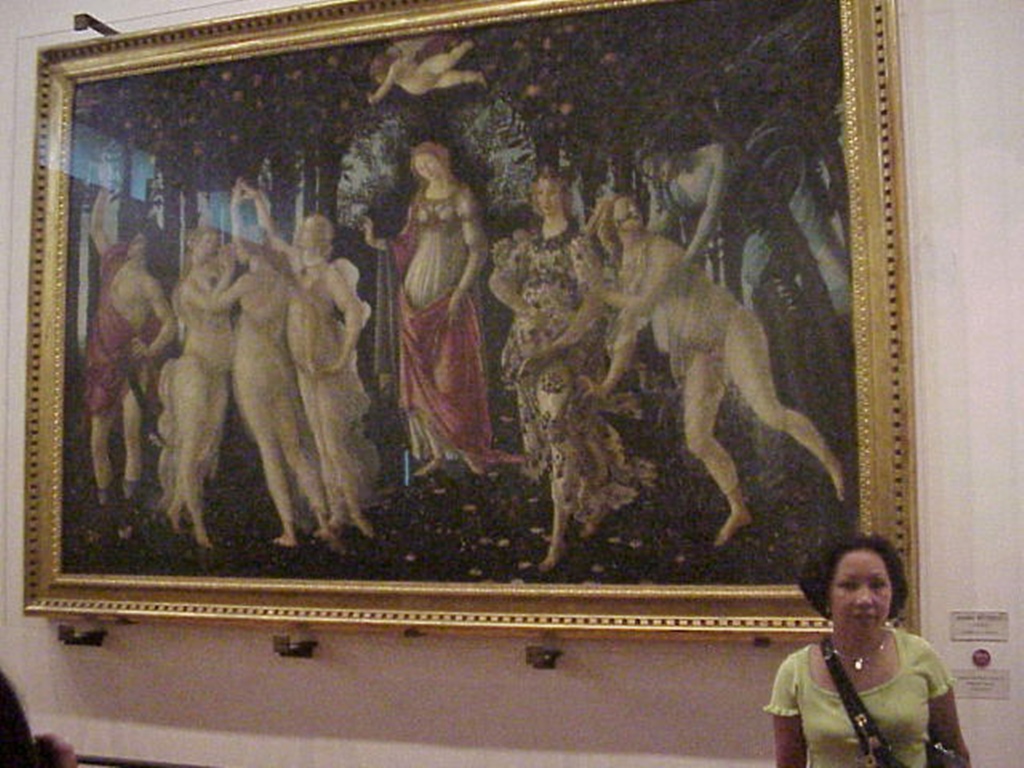
Nella and Primavera, Sandro Botticelli (c. 1482)
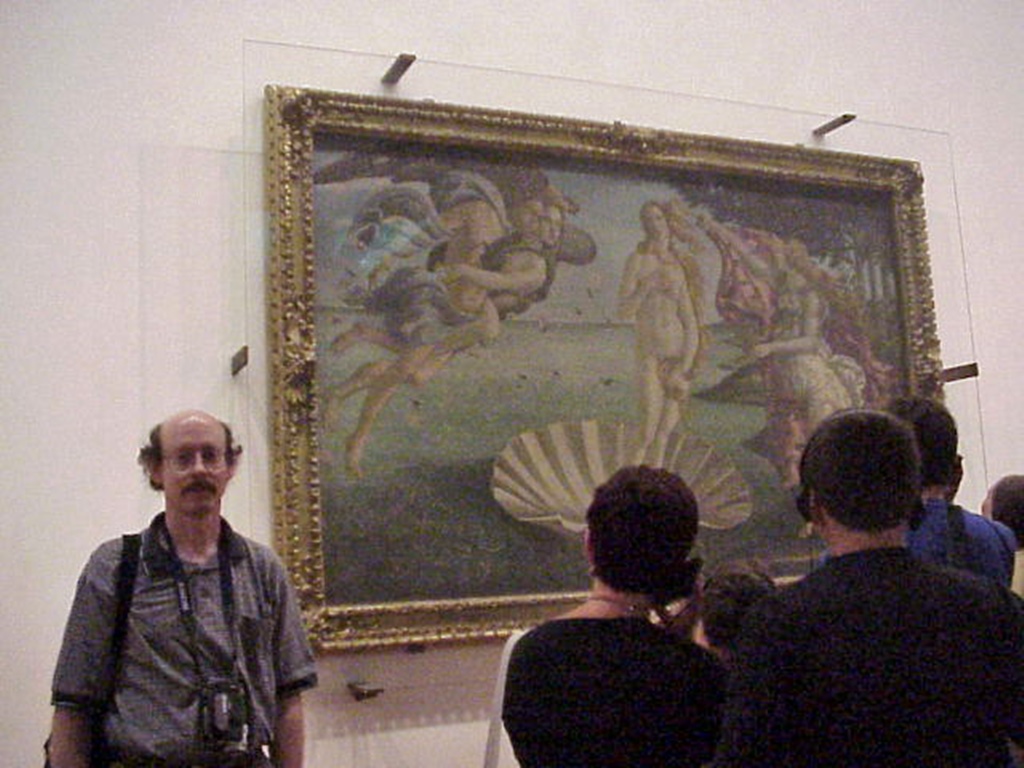
Bob and The Birth of Venus, Sandro Botticelli (c. 1485-87)
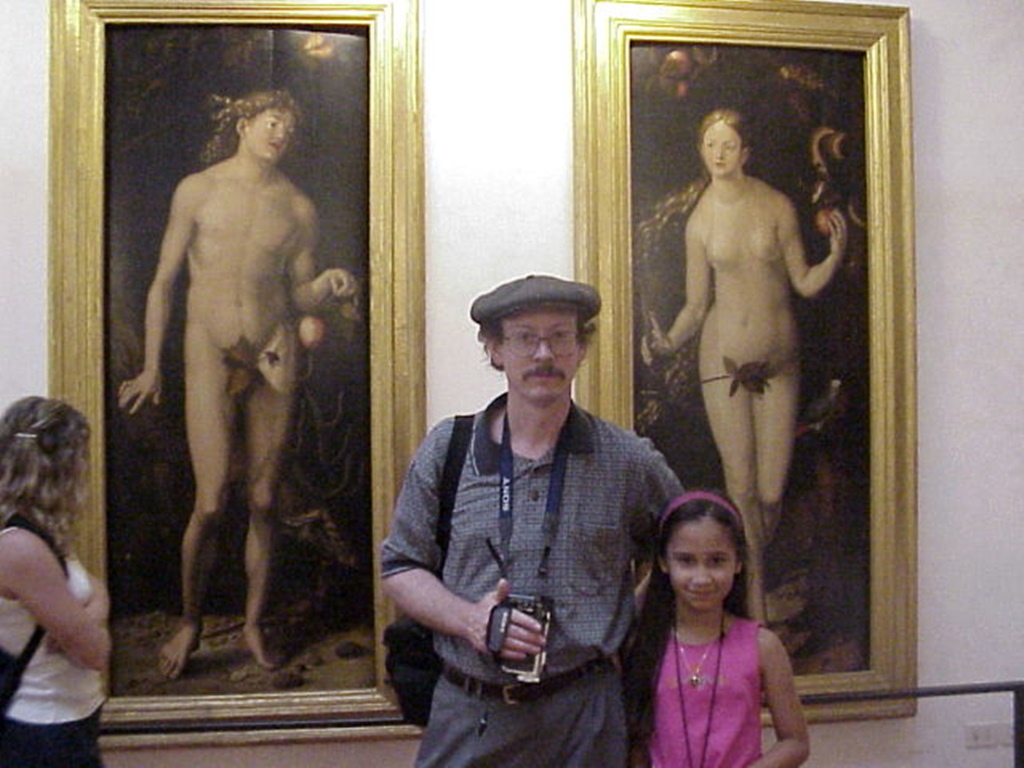
Bob and Connie and Adam and Eve, Hans Baldung Grien (1507)
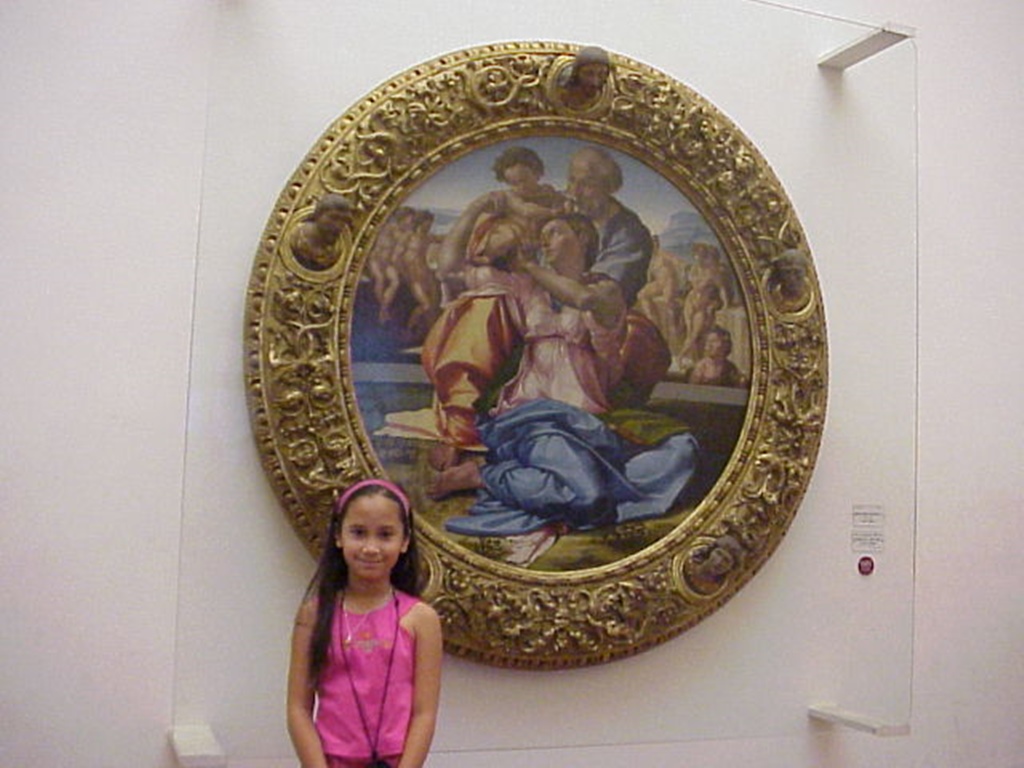
Connie and the Doni Tondo, Michelangelo (c. 1507)
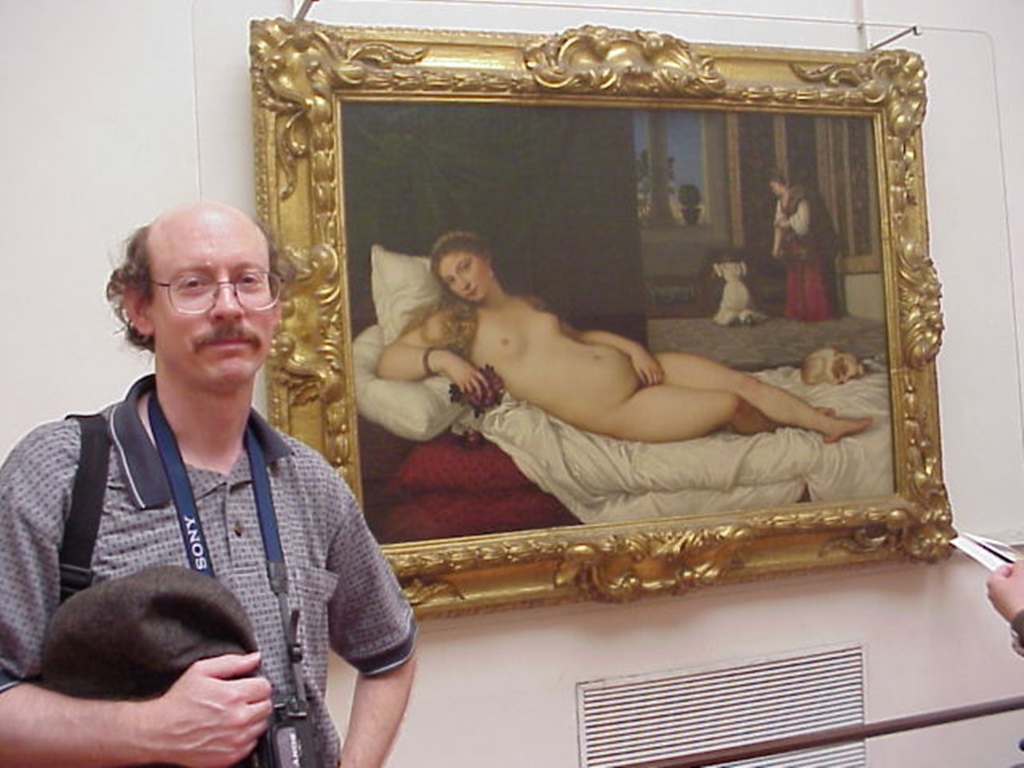
Bob and Venus of Urbino, Titian (1538)
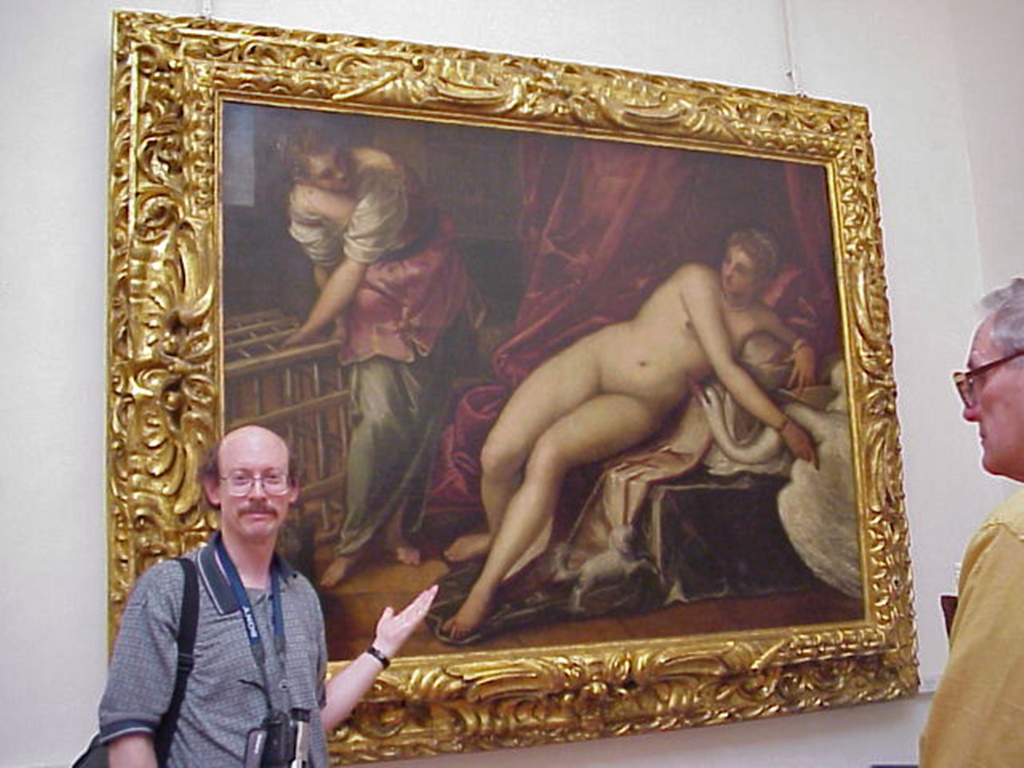
Bob and Leda and the Swan, Jacopo Tintoretto (c. 1570)
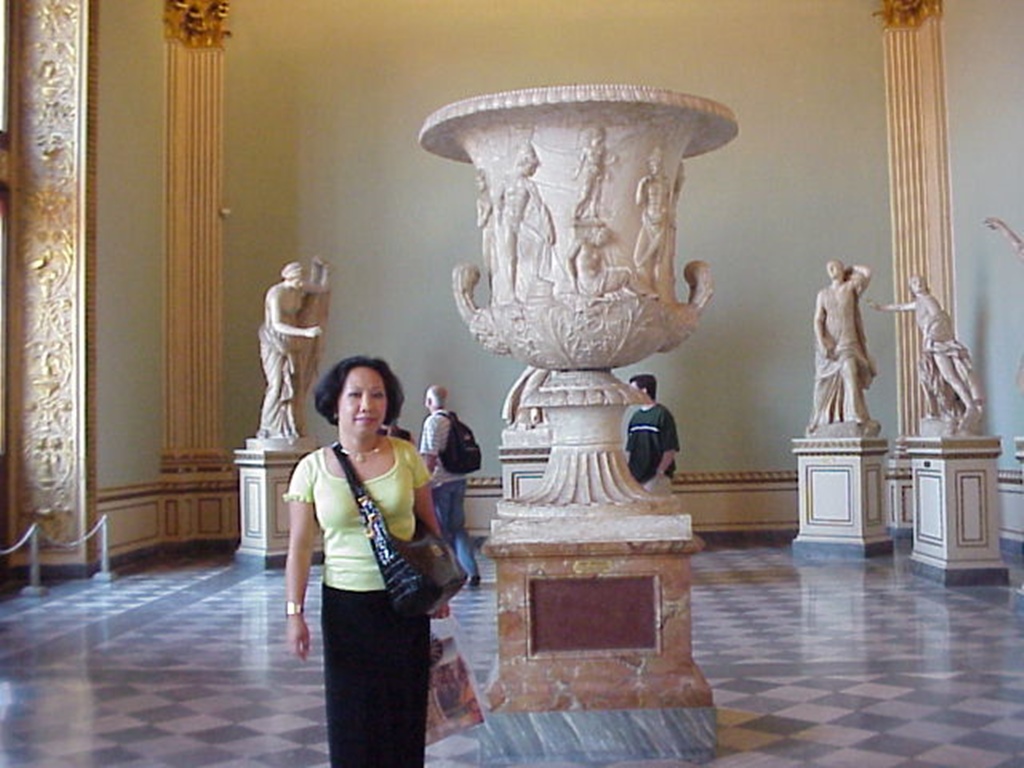
Nella and Urn
The museum floors of both buildings are laid out with building-long hallways with mostly
classical statues on display and doorways leading into rooms with the many paintings.
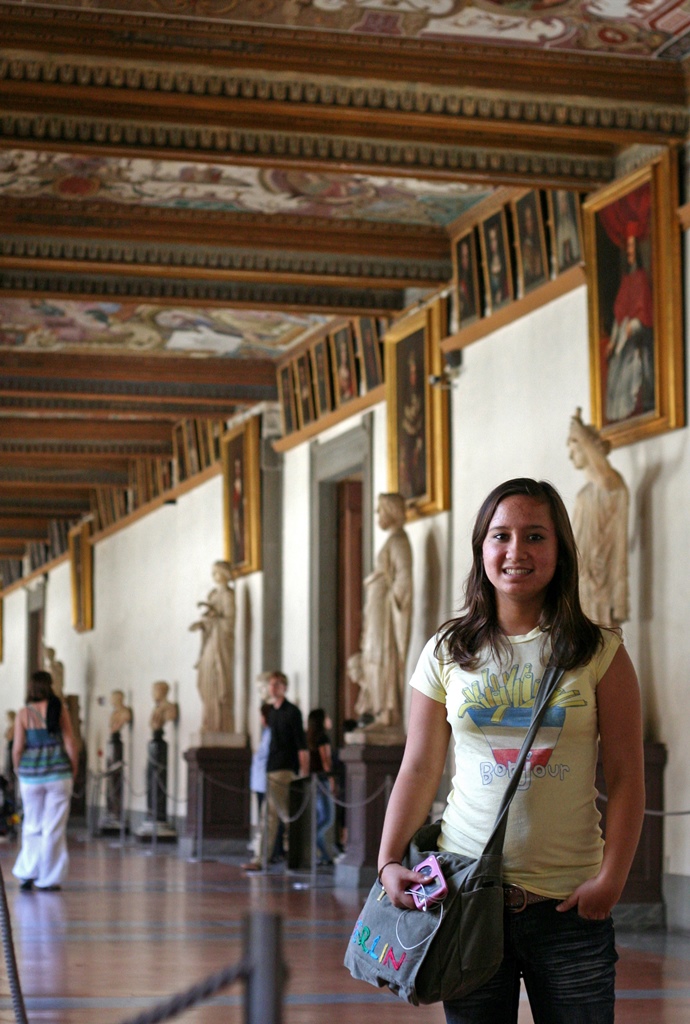
Connie in Hallway
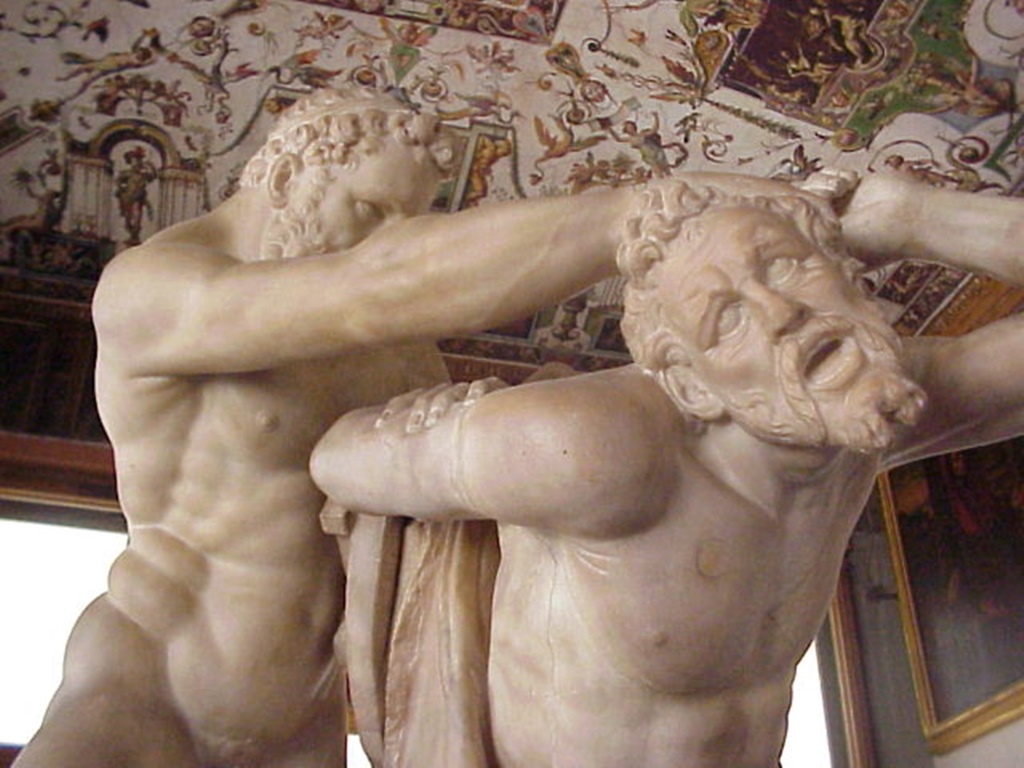
Roman Statue of Fighters
At the south end of the western building is a good viewpoint of the Ponte Vecchio, as well as
the Vasari Corridor.
Ponte Vecchio and Vasari Corridor
The Vasari Corridor is an enclosed walkway that extends from the Palazzo Vecchio to
the north (more on this later), through the Uffizi, out the south end of the Uffizi
and across the top of the shops on the Ponte Vecchio, and across other buildings on
the other side of the river to end eventually at the Pitti Palace. This made it
possible for VIPs to walk back and forth between the palace and the center of
government without having to worry about traffic (or the unwashed masses). The
Corridor is usually closed to visitors, though apparently special tours are
available.
From the Uffizi we walked north into the Piazza della Signoria, the square in front
of the Palazzo Vecchio, to see what we could find there.



